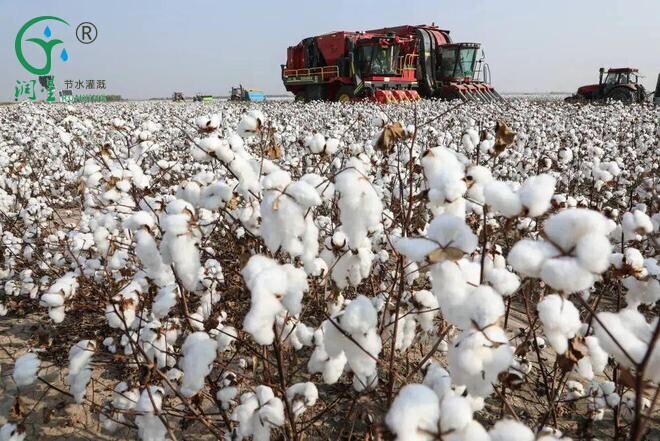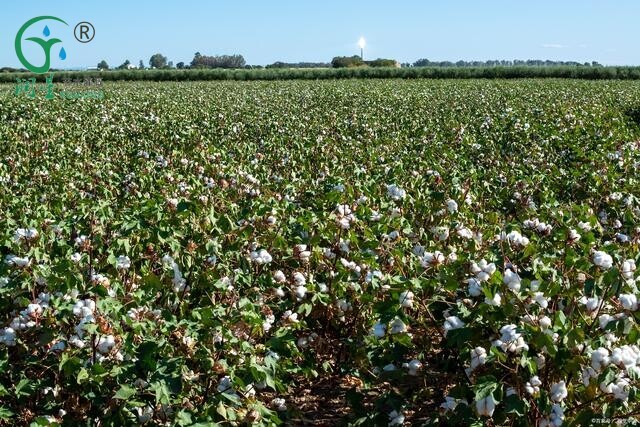Cotton Cultivation in South America: The Importance of Drip Irrigation Systems and Efficient Farming Tips
In the vast landscapes of South America, cotton stands as a crucial economic crop, with its cultivation techniques directly impacting farmers' yields and the sustainability of agriculture. Especially in today's context of increasing water scarcity, the application of drip irrigation systems has become even more significant. This article will explore whether drip irrigation systems are necessary for cotton cultivation in South America, detail the required drip irrigation equipment and installation methods, and share some efficient cotton farming tips.

I. The Importance of Drip Irrigation Systems in Cotton Cultivation
Despite South America's diverse climates, many regions face water scarcity. Cotton, as a water-intensive crop, requires substantial amounts of water throughout its growth cycle. Traditional irrigation methods like flooding not only waste water resources but also lead to soil salinization and the proliferation of pests and diseases. In contrast, drip irrigation technology, characterized by water-saving, fertilizer-saving, high yields, and superior quality, has emerged as the ideal choice for cotton cultivation.
Drip irrigation systems deliver water directly to the crop roots through piping systems, reducing water evaporation and loss, and enhancing water utilization efficiency. Additionally, drip irrigation allows for precise irrigation based on crop growth needs, avoiding soil compaction and root damage caused by over-irrigation. Therefore, the adoption of drip irrigation systems is crucial for ensuring cotton yields and quality in South America.
II. Required Drip Irrigation Equipment and Installation Methods
Drip irrigation equipment primarily includes drippers, drip tapes, and drip lines. When cultivating cotton in South America, suitable drip irrigation equipment should be selected based on local climatic conditions, soil types, and cotton varieties.
Selection of Drip Tapes: Drip tapes offer low costs and easy installation, making them suitable for use in greenhouses. When selecting drip tapes, factors such as flow rate, pressure resistance, and service life should be considered.
Installation Methods:
Land Preparation: Before laying drip tapes, the land should be leveled, and weeds, stones, and other obstacles removed.
Measurement and Planning: Based on the size and shape of the cotton field, determine the length and number of drip tapes, and conduct precise measurements and planning.
Laying Direction: Drip tapes should be laid perpendicular to the cotton rows to ensure uniform water distribution.
Laying Depth: Drip tapes should be buried about 10-20 centimeters in the soil to prevent displacement by wind and aging due to direct sunlight.
Fixation and Connection: Use U-shaped pins or ground stakes to fix drip tapes and connect them to the water source to ensure smooth water flow.
III. Efficient Cotton Farming Tips
Land Selection and Preparation: Choose fields with loose, fertile soil, good drainage, and adequate sunlight. During land preparation, add appropriate soil amendments and fertilizers to improve soil fertility.
Seed Treatment and Planting: Select cotton varieties suitable for local climates and soils for planting. Before sowing, treat seeds, such as by germinating or mixing with pesticides, to improve germination rates and stress resistance. When planting, maintain appropriate plant spacing and row spacing to facilitate cotton growth and ventilation.
Irrigation and Fertilization: Use drip irrigation technology for irrigation, and conduct precise irrigation and fertilization based on cotton growth needs. During the early growth stage of cotton, control irrigation amounts to avoid excessive watering that can lead to overly wet roots. In the later growth stage, gradually increase irrigation amounts to meet cotton's water needs. Additionally, apply fertilizers based on soil nutrient status and cotton growth requirements.
Pest and Disease Control: Strengthen monitoring and control of pests and diseases, adopting a combination of agricultural, biological, and chemical methods to reduce their impact on cotton yields.
Timely Harvesting: Cotton matures between September and November, and timely harvesting is essential. When using mechanical harvesting, ensure machine cleaning and maintenance for the next planting season.

In summary, the adoption of drip irrigation systems is crucial for ensuring cotton yields and quality in South America. Additionally, through scientific farming techniques and meticulous field management, cotton yields and quality can be further improved. We hope this article provides useful references and insights for cotton farmers in South America.
If you have any needs, please contact us.
About Us
We are dedicated to offering innovative, water-saving, and labor-saving irrigation solutions for agriculture worldwide. Our focus on quality and continuous innovation drives the development and progress of the industry

